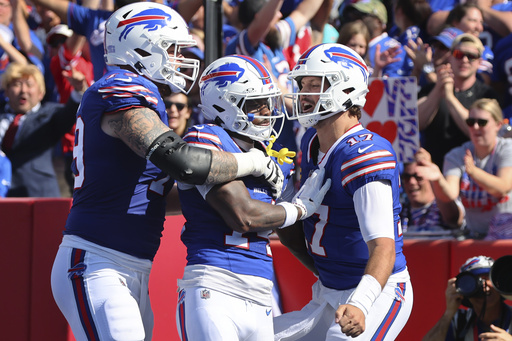The young man who moved to Columbus only a month ago sounds almost like a seasoned native.
In the first 10 minutes of rapid-fire conversation, Nic Cable references designer Alexander Girard, J. Irwin Miller’s human rights advocacy, Cummins Inc.’s diversity groups, the local Ganesh Festival beginning Sunday, the promise of the growing number of East Indians in the city and the community’s overall varied culture amid small-town America.
Plus, he tosses in a mention of the new book “Wicked Columbus, Indiana” for good measure while mentioning bits of the local past.
Then he takes a breath or two.
Clearly, the 28-year-old, new full-time minister at the Unitarian Universalist Congregation of Columbus serves as a quick study of local history. But he aims to be far more than a cultural reference guide. He has read and studied upon his arrival here so he could waste little time jumping into his role that he and his congregation see: that of a celebrator of diverse religious thought amid a multi-faith, multicultural landscape.
“I come from a background of bridging social capital,” he said, relaxing in an office chair next to local artist Cheryl Liz Byers’ creative, abstract depiction of the city’s better-known landmarks. “And there’s all these assets in this community.
“So the question is, ‘Can those individual groups and institutions be bridged into something larger for the sake of progressive renewal? In the spirit of J. Irwin Miller, Columbus can be a model town for how people meet amid their differences, and how we create a sense of community across those differences.”
The Milwaukee, Wisconsin-native already has begun to make that happen.
He recently helped the Rev. Felipe Martinez of First Presbyterian Church and others hurriedly organize a local vigil to protest the racial-oriented hate and violence that unfolded at a white supremacist rally in Charlottesville, Virginia.
“For him to jump right in speaks well of his leadership, of course,” Martinez said. “And it speaks well of the church and congregation that has called him because they saw that in him.
“I’m impressed with his energy and his wisdom. His young age is perhaps something of an interesting factor in the equation. But the key factor is that he really has a heart for dialogue.”
He wears that heart not on his sleeve but on his short collar in the form of a purple tie, his favorite color because it symbolizes a blend of political blue and red. A few days ago, he agreed to answer a few questions about his beliefs and perspective.
This is the smallest town you ever have lived in. How does that impact your local role?
I believe that social transformation can happen in a more noticeable and more impactful way in an area near the 50,000-population mark. I believe we can build a progressive coalition for that social transformation quicker, because the players here are more readily visible (than in a metro area).
We can say, “Here’s the Columbus Human Rights Commission, over here are the progressive churches, and here is the Hindu community, here’s Cummins — a major sponsor of multiculturalism and international business, and over here’s a still-new school superintendent very sensitive to how diversity benefits the school system.”
You seem to pay keen attention to this area’s past. Why?
We step into history and are invited to be shapers of history rather than being shaped by history.
When I look at this town, it’s impossible for me not to look at the DNA strands that have shaped it, and to understand the responsibility of being invited into collaborative leadership with others who can work to move us into a new day.
What do you make of Columbus’ diversity and how can it be further leveraged for good?
We have to ask if we are going to continue to notice this diversity as an asset, as something that makes Columbus beautiful — and are we going to move toward that multiculturalism and toward that pluralism. Or will we retreat from it maybe because of some of our inexperience with crossing lines of cultural difference?
One of your first sermons to the people here was on Moses and burning bush?
(The community theater actor recited the Genesis story nearly verbatim). When Moses then looked at the bush, he became afraid.
And in my opinion, that’s because what he saw was unexpected and unforgettable.
And that’s exactly what this town is all about.
So, when we’re willing to look and to see the unexpected and yet unforgettable — what is all this great architecture, what are all these people of such great diversity, and what are these newer communities of Hindus and Muslims and Jews saying?
They’re saying, “We have a stake in the future of America. And that stake and movement is toward greater equity and inclusion and fulfilling the dream of what America can be.”
You seem unafraid and even bold about using elements and stories from the Christian tradition.
I have a curiosity. And sacred stories help inspire our creative prophetic imagination, as (Christian theologian) Walter Brueggemann wrote about it. Brueggemann says our job is to keep conjuring worlds that need to come into being.
You clearly seem confident reaching beyond the four walls of this church.
I want to bring out that passion and fire for social transformation in all of us. And that means collaborating with people far behind this congregation. We can’t keep our light hidden under a bushel on West Goeller Boulevard.
[sc:pullout-title pullout-title=”About Nic Cable” ][sc:pullout-text-begin]
Age: 28
Role: New minister at the Unitarian Universalist Congregation of Columbus.
Hometown: Milwaukee, Wisconsin.
Family: Wife, Hattie Cable, a lawyer.
Education: Graduated Summa Cum Laude from Chicago Theological Seminary in 2014. Focused on interfaith leadership and attended interfaith peace building trip to Palestine and Israel. Received a national fellowship through the Fund for Theological Exploration. Graduated Summa Cum Laude from DePaul University in 2011. Double Major: Religious Studies (concentration: Ethics and Social Justice) and Peace, Justice, and Conflict Studies (concentration: Gender and Sexuality). Received national Fellowship through the Interfaith Youth Core. Attended interfaith peace building trip in Hiroshima and Nagasaki, Japan.
Biggest goal in the current post: To help the congregation become “a beacon for diverse religious thought and courageous action.” Most notably, this will emerge through the development of the Columbus Interfaith Campus and by nurturing a progressive interfaith coalition for social transformation.
All the world’s a stage: Boasts an extensive theater background both as a child and as an adult with roles in everything from musicals to Shakespeare dramas.
Most people don’t know that I am: Living now in my fifth Midwestern state in the last decade.
Hobbies: “I am a huge sports fan,” Cable said, especially highlighting a passion for the NFL’s Green Bay Packers. “I mean not just football and basketball, but golf, soccer and sports of all kinds.”
[sc:pullout-text-end]





